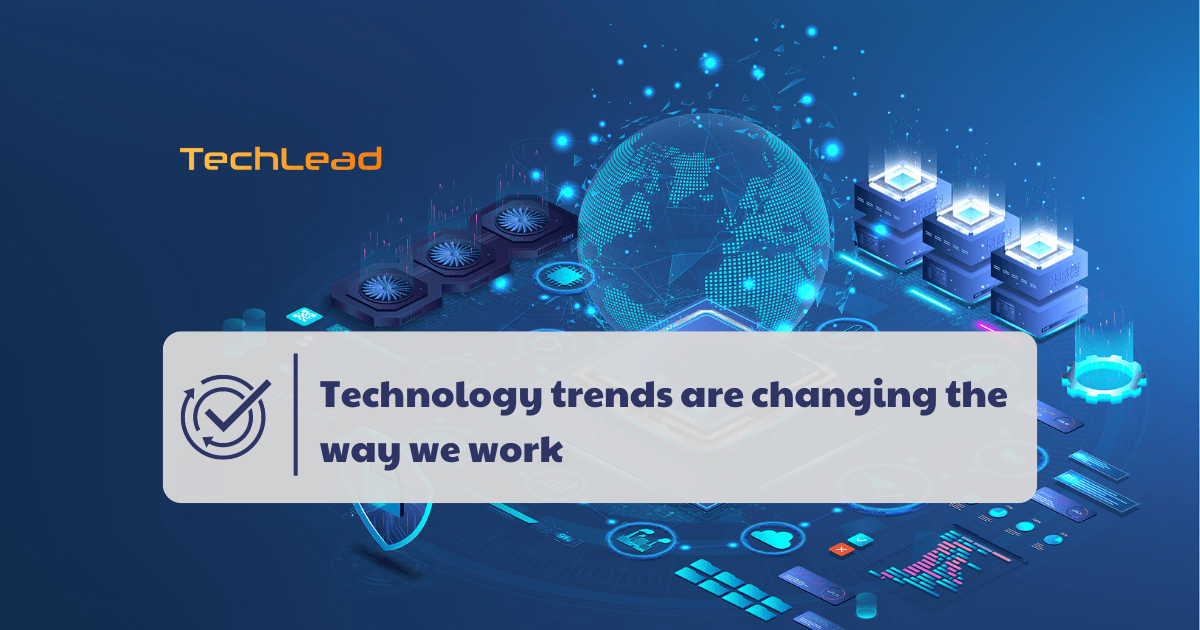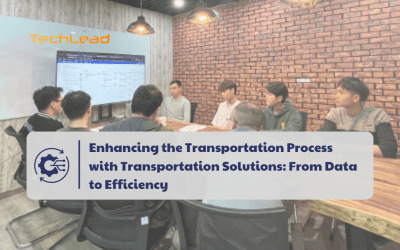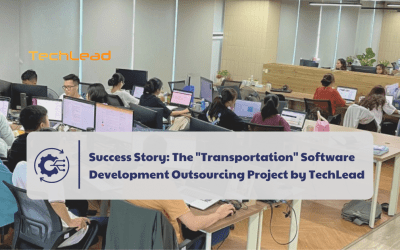In today’s rapidly evolving world, technological advancement is revolutionizing work and communication. Keeping up with these trends is crucial for productivity and competitiveness. This blog explores key technological trends transforming our work environment.
Remote work and related technology
Remote work and related technology (Collected)
1. The Explosion of Remote Work
Remote work has experienced a significant boom, largely driven by the COVID-19 pandemic, advancements in technology, and the increasing need for work-life balance. The pandemic forced many businesses to adapt to remote work models almost overnight, leveraging technology to maintain operations while ensuring the safety of their employees. This shift highlighted the potential for remote work to become a permanent fixture in many industries. Additionally, the rapid progress in technology, particularly in communication and collaboration tools, has made remote work more feasible and efficient. As people seek better work-life balance, remote work provides the flexibility to manage both professional and personal responsibilities more effectively.
2. Tools and Software Supporting Remote Work
The success of remote work hinges on the availability of robust tools and software designed to facilitate seamless communication and collaboration. Platforms like Zoom, Microsoft Teams, Slack, and Google Workspace have become indispensable in the remote work environment. Zoom offers high-quality video conferencing capabilities, enabling virtual meetings that replicate in-person interactions. Microsoft Teams provides a comprehensive solution that integrates chat, video meetings, and file storage. Slack’s instant messaging platform enhances team communication through organized channels and direct messages. Google Workspace combines cloud-based tools such as Google Docs, Sheets, and Drive, allowing real-time collaboration on documents and easy file sharing. These technological solutions have become crucial in maintaining productivity and connectivity among remote teams.
2. Benefits and Challenges of Remote Work
Remote work brings numerous benefits, primarily flexibility, cost savings, and global talent recruitment. Flexibility allows employees to work from any location, at times that suit their personal schedules, which can lead to increased job satisfaction and productivity. Companies can also save on office space and related overhead costs, reallocating these resources to other areas of the business. Furthermore, remote work opens up opportunities to hire talent from anywhere in the world, diversifying and expanding the talent pool. However, remote work also presents challenges, including time management, communication, and team cohesion. Managing one’s time effectively in a remote setting requires discipline and strong organizational skills. Communication can be hindered by the lack of face-to-face interactions, leading to potential misunderstandings and delays. Maintaining team connection and culture requires intentional efforts to engage and collaborate beyond just work tasks. Despite these challenges, the integration of technology continues to improve the remote work experience, making it a viable long-term option for many organizations.
Artificial Intelligence and Machine Learning
Artificial Intelligence and Machine Learning (Collected)
1. Concepts and Roles in the Workplace
Artificial Intelligence (AI) and Machine Learning (ML) are pivotal technologies reshaping modern work environments. AI refers to the simulation of human intelligence in machines programmed to think and learn. Machine Learning, a subset of AI, involves the development of algorithms that enable computers to learn from and make decisions based on data. In the workplace, AI and ML enhance efficiency, accuracy, and productivity by automating complex tasks, analyzing large datasets, and providing insights for decision-making. These technologies are increasingly integral to operations, driving innovation and transforming traditional workflows.
2. Applications of AI in Various Fields
The applications of AI span multiple sectors, each benefiting from the technology’s capabilities in unique ways. In customer service, AI-driven chatbots and data analytics are revolutionizing how companies interact with and understand their customers. Chatbots, powered by natural language processing, can handle inquiries 24/7, providing immediate assistance and freeing human agents for more complex issues. Customer data analysis through AI helps businesses personalize experiences, predict customer behavior, and enhance satisfaction.
In financial management, AI is used for trend prediction and process automation. By analyzing market trends and financial data, AI systems can forecast future movements, aiding in strategic planning and investment decisions. Automation of repetitive tasks, such as transaction processing and compliance checks, reduces errors and operational costs while increasing efficiency. This technology not only optimizes financial workflows but also enhances risk management through real-time fraud detection and prevention.
In manufacturing, AI optimizes processes and predicts maintenance needs. Machine Learning algorithms analyze production data to identify inefficiencies and suggest improvements, leading to cost savings and higher output quality. Predictive maintenance, enabled by AI, forecasts equipment failures before they occur, minimizing downtime and extending the lifespan of machinery. This proactive approach ensures continuous operation and reduces maintenance costs.
3. The Future of AI and Predictive Changes in the Work Environment
The future of AI promises even more profound changes in the workplace. As AI technology continues to evolve, it will further integrate into various job functions, creating new roles and redefining existing ones. We can expect increased collaboration between humans and AI, where AI handles data-intensive tasks and humans focus on strategic, creative, and interpersonal aspects of work. The widespread adoption of AI will necessitate continuous learning and adaptation, as employees need to develop new skills to work alongside these advanced technologies.
In conclusion, AI and Machine Learning are not just enhancing current work processes but also paving the way for a transformative future in the workplace. The ongoing development and integration of these technologies will continue to drive efficiency, innovation, and growth across industries, fundamentally altering how we approach and execute our daily tasks.
Blockchain Technology
Blockchain Technology (Collected)
1. Applications of Blockchain Technology in the Workplace
Blockchain technology has a wide range of applications that are transforming the way we conduct business and manage data. In the financial sector, blockchain technology enables secure transactions and the creation of smart contracts. Smart contracts are self-executing contracts with the terms of the agreement directly written into code. They automatically execute and enforce the terms of the contract, reducing the need for intermediaries and increasing efficiency. Moreover, blockchain technology enhances supply chain management by providing real-time tracking and traceability of products. This ensures the authenticity and integrity of goods from the point of origin to the final consumer. Additionally, blockchain technology offers robust solutions for data management by ensuring security and controlled access. Through cryptographic techniques, blockchain technology safeguards sensitive information and allows for permissioned access, ensuring that only authorized individuals can view or alter data.
2. Blockchain in Finance: Secure Transactions and Smart Contracts
In the financial industry, blockchain technology has revolutionized the way transactions are conducted. The secure nature of blockchain technology ensures that financial transactions are immutable and tamper-proof, significantly reducing the risk of fraud. One of the most notable innovations is the development of smart contracts. These are programmable contracts that automatically execute when predefined conditions are met. Smart contracts leverage blockchain technology to provide transparency, reduce administrative overhead, and eliminate the need for third-party intermediaries, such as lawyers or escrow agents. This not only accelerates the transaction process but also reduces costs and enhances trust between parties.
3. Blockchain in Supply Chain: Tracking and Tracing Products
Blockchain technology has profound implications for supply chain management. By leveraging blockchain technology, companies can achieve unprecedented levels of transparency and accountability. Each step of the supply chain can be recorded on the blockchain, creating an immutable audit trail that tracks the journey of products from manufacturers to consumers. This real-time tracking capability helps in verifying the authenticity of products, preventing counterfeiting, and ensuring compliance with industry standards. Moreover, blockchain technology enables stakeholders to quickly identify and address issues such as recalls or delays, thereby improving overall efficiency and customer satisfaction.
4. Blockchain in Data Management: Security and Permissioned Access
Blockchain technology offers significant advancements in data management by providing secure and permissioned access to information. The use of cryptographic algorithms ensures that data stored on the blockchain is encrypted and accessible only to authorized users. This enhances data privacy and security, making blockchain technology an ideal solution for handling sensitive information such as medical records, personal identification, and financial data. Furthermore, the decentralized nature of blockchain technology eliminates single points of failure, reducing the risk of data breaches and ensuring the integrity of the information. By utilizing blockchain technology, organizations can streamline data management processes, enhance security, and ensure regulatory compliance.
5. Benefits and Challenges of Implementing Blockchain Technology in the Workplace
The implementation of blockchain technology in the workplace offers numerous benefits but also presents certain challenges. One of the primary benefits is the enhanced security and transparency provided by blockchain technology. The decentralized and immutable nature of blockchain technology ensures that records are tamper-proof and verifiable, thereby increasing trust among stakeholders. Additionally, blockchain technology can streamline processes, reduce costs, and improve efficiency by eliminating the need for intermediaries and automating tasks through smart contracts. However, the adoption of blockchain technology also poses challenges. These include the technical complexity of implementing and maintaining blockchain systems, the need for significant computational resources, and the regulatory uncertainties surrounding the use of blockchain technology. Organizations must carefully consider these factors and develop strategies to address them in order to fully harness the potential of blockchain technology.
Internet of Things
Internet of Things (Collected)
1. Concept and Operation of IoT
The Internet of Things (IoT) refers to the interconnected network of physical devices that are embedded with sensors, software, and other technologies with the objective of connecting and exchanging data with other devices and systems over the internet. This technology enables devices to collect and share data, facilitating more intelligent and efficient operations. IoT works by leveraging various technologies, including real-time analytics, machine learning, commodity sensors, and embedded systems. Devices equipped with these technologies communicate through a network, often using protocols like MQTT (Message Queuing Telemetry Transport) or HTTP (Hypertext Transfer Protocol). IoT devices typically operate within a layered architecture, including sensors, data processing, connectivity, and user interface layers, ensuring seamless data flow and user interaction. By integrating IoT into their operations, businesses can achieve enhanced automation, improved efficiency, and better decision-making capabilities.
2. Applications of IoT in Various Industries
IoT technology has widespread applications across multiple industries, revolutionizing traditional processes and introducing innovative solutions. In the manufacturing sector, IoT plays a crucial role in automation and remote monitoring. Smart factories equipped with IoT devices can automate production lines, monitor equipment in real-time, and predict maintenance needs, thereby reducing downtime and increasing productivity. In healthcare, IoT facilitates patient monitoring and medical device management. Wearable devices and smart sensors can track vital signs and send data to healthcare providers, enabling proactive health management and timely interventions. Additionally, IoT is transforming homes into smart environments where energy management and security are paramount. Smart home devices such as thermostats, lighting systems, and security cameras can be controlled remotely, optimizing energy consumption and enhancing home security. The integration of IoT in these sectors not only improves operational efficiency but also enhances the quality of services provided.
3. Impact of IoT on Work Environment and Daily Life
The impact of IoT on the work environment and daily life is profound, ushering in a new era of connectivity and efficiency. In the workplace, IoT technology streamlines operations and enhances productivity by automating routine tasks and providing real-time data insights. Smart office solutions, such as connected lighting and climate control systems, create more comfortable and energy-efficient workspaces. IoT also enables remote work capabilities, allowing employees to access and manage office resources from anywhere, thereby fostering a more flexible and adaptive work culture. In daily life, IoT enhances convenience and safety. Smart home devices offer automated control over household appliances, improve energy efficiency, and provide robust security measures. For instance, smart locks and surveillance systems ensure home security, while smart appliances optimize energy use, contributing to cost savings. The proliferation of IoT devices is transforming the way we live and work, making environments more responsive and adaptive to our needs, ultimately leading to improved quality of life and enhanced productivity.
Virtual Reality (VR) and Augmented Reality (AR)
Virtual Reality (VR) and Augmented Reality (AR) (Collected)
1. Concepts of VR and AR
Virtual Reality (VR) and Augmented Reality (AR) are transformative technologies that are revolutionizing various industries. VR immerses users in a completely virtual environment, often using headsets and motion controllers to simulate a three-dimensional space. This technology creates an artificial reality that can mimic real-world scenarios or present entirely fictional worlds. On the other hand, AR overlays digital information onto the real world, enhancing the user’s perception and interaction with their environment. By integrating digital elements into our physical surroundings through devices like smartphones, tablets, or AR glasses, AR provides a more interactive and engaging experience without completely detaching users from the real world. Both VR and AR are pivotal in reshaping how we interact with technology, offering new possibilities for immersive experiences.
2. Applications of VR and AR in the Workplace
The applications of VR and AR in the workplace are vast and varied, significantly enhancing productivity and efficiency. In training and education, VR provides immersive learning environments where employees can practice skills in a safe, controlled setting. This is particularly beneficial for high-risk industries such as aviation, healthcare, and construction, where real-world training can be costly and dangerous. AR, meanwhile, is transforming on-the-job training by providing real-time information and guidance. Technicians, for example, can use AR glasses to receive step-by-step instructions while performing complex tasks, reducing errors and increasing efficiency. In design and creativity, VR allows designers to create and manipulate 3D models in a virtual space, enabling a more intuitive and detailed design process. AR enhances this by enabling real-time collaboration and visualization of designs in a real-world context, facilitating better communication and faster iterations.
3. Training and Education: Virtual Learning Environments, Realistic Simulations
VR and AR technologies are revolutionizing training and education by creating virtual learning environments and realistic simulations. VR provides immersive training experiences that can replicate real-life scenarios, allowing learners to practice and hone their skills without the risk of real-world consequences. For example, medical students can perform virtual surgeries, pilots can simulate flying conditions, and firefighters can practice emergency responses in a controlled, virtual environment. These realistic simulations enhance the learning experience, improve retention, and increase the effectiveness of training programs. AR complements this by providing interactive educational content that can be accessed in real-time. Students can use AR applications to visualize complex concepts, conduct virtual experiments, and access additional information, making learning more engaging and interactive.
4. Design and Creativity: Product Design, User Experience
In the realms of design and creativity, VR and AR technologies are game-changers. VR offers designers the ability to create and interact with 3D models in a virtual environment, allowing for a more intuitive and detailed design process. This technology enables designers to visualize products from all angles, make adjustments in real-time, and test functionalities before moving to the production stage. AR, on the other hand, enhances user experience by overlaying digital information onto physical products. This allows designers to see how a product will look and function in a real-world context, facilitating better decision-making and faster iterations. For instance, architects can use AR to visualize building designs on-site, interior designers can showcase furniture arrangements in clients’ homes, and product designers can demonstrate prototypes in real-time.
5. Marketing and Sales: Virtual Shopping Experiences, Product Demonstrations
VR and AR are revolutionizing marketing and sales by creating immersive shopping experiences and interactive product demonstrations. VR enables businesses to create virtual stores where customers can browse products, try them out in a simulated environment, and make purchases without leaving their homes. This technology provides a unique and engaging shopping experience that can increase customer satisfaction and drive sales. AR enhances this by allowing customers to see how products will look and function in their real-world environment. For example, customers can use AR applications to visualize furniture in their homes, try on virtual clothing, or see how a new car would look in their driveway. These virtual and augmented shopping experiences provide customers with more information and confidence in their purchase decisions, ultimately boosting sales and brand loyalty.
6. Benefits and Challenges of VR and AR in the Workplace
The integration of VR and AR technologies in the workplace offers numerous benefits but also presents certain challenges. One of the primary benefits is the enhancement of training and education through realistic simulations and interactive learning environments, leading to improved skill acquisition and retention. These technologies also facilitate more efficient design and creativity processes by enabling real-time collaboration and visualization. In marketing and sales, VR and AR provide unique and engaging customer experiences, driving sales and increasing brand loyalty. However, challenges include the high cost of implementing these technologies, the need for significant technical expertise, and potential resistance to change from employees accustomed to traditional methods. Additionally, there are concerns about data privacy and security, as well as the need for continuous updates and maintenance to keep up with technological advancements. Despite these challenges, the potential benefits of VR and AR in the workplace make them valuable tools for future growth and innovation.
Conclusion
In summary, recent technological advancements have revolutionized work environments, enabling remote work with tools like Zoom and Microsoft Teams. Artificial intelligence (AI) and machine learning (ML) have transformed sectors such as customer service and finance, while blockchain ensures transparency in transactions. The Internet of Things (IoT) connects devices for smarter manufacturing and healthcare solutions. Virtual Reality (VR) and Augmented Reality (AR) offer immersive experiences for training and design. Businesses are encouraged to embrace these innovations to boost productivity and enhance overall quality of life.”
Please contact TechLead so we can support you in Software Development to create the best solutions!
TechLead leading technology solution for you (Collected)
TECHLEAD – Leading technology solution for you!
Hotline: 0372278262
Website: https://www.techlead.vn
Linkedin: https://www.linkedin.com/company/techlead-vn/
Email: [email protected]
Address: 4th Floor, No. 11, Nguyen Xien, Thanh Xuan, Hanoi





